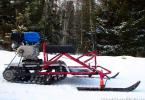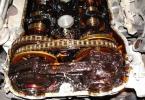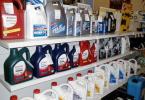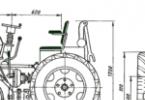In the market or in a store, it has always become a special argument in the direction of the profitability of making a purchase, mainly when it characterizes expensive products, in particular, equipment and transport. For every car owner, for many years, a car with the coveted four rings under the Audi brand has been an undeniable example of reliability and quality. Most drivers and potential buyers of cars are sure: the country of manufacture of Audi and the place of assembly are absolutely identical concepts, which is initially an incorrect statement. In this article, we will tell you where Audi is assembled, focusing on the model range and popular specimens from the manufacturer, whether German ones can be found in the Russian Federation and how significant is the influence of this fact on the reliability, quality parameters and operational properties of the car.
The location of the factories for the production of Audi cars.A bit of history
Nowadays, as well as throughout the entire long period of the existence of Audi, its products were considered first-class, reliable and deserving of consumer attention. The entire range of cars under this brand belongs to the premium category, characterized by perfection from both a technological and a design position. The history of the company has more than a hundred years, during which time the company has gone through many transformations and changes, improved and grown, and today it is one of the leading and competitive corporations leading in the automotive industry. The world first heard about the Audi brand back in 1910: after that the company was renamed several times due to the legal and social nuances of that time, returning its name only in 1965. At the present time, the company successfully operates as part of the Volkswagen-Audi concern, conquering all large market segments and positive ambitions of consumers, despite the far from democratic cost of its cars.
The scale of production of cars under the Audi brand is truly global: the vehicles of the concern are supplied to almost all corners of the world, which makes you wonder whether several factories in Germany can cope with such a volume of work? Of course not: the subsidiaries of the concern have a global geography, which predetermines the need to clarify before, whose assembly is a certain model, since this indicator can predetermine the quality of the product and its operational resources.
Locations of Audi branches
In the technical documentation for Audi vehicles, Germany is indicated, however, the manufacturer of the products does not always have a German location. The concern's branches are located on almost all continents, which allows us to actively supply products to all countries of the world, cope with the global scale of production work, while developing new copies, strengthening its position in the market. With regard to production, all the significant components and assemblies that predetermine the appropriate functionality of the vehicle are manufactured mainly at factories in Germany. Branches in most cases are engaged in assembly work, which minimizes the factor of non-conformity of the goods to the global brand. The location of the assembly plants of the Audi concern is predetermined by their following geography:
- Germany, as a country of manufacture of Audi, has more than two dozen enterprises for the production of vehicles, as well as centers directly involved in design and engineering issues.
- In the United States, the largest complex in terms of scale and production trends is located, where Audi is assembled of almost all modifications, providing 100% of the North American regions with products.
- Manufacturing units in Brazil - five SKD subsidiaries, plus factories in Argentina and Mexico that assemble select Audi models - provide products to the Latin American automotive markets.
- The production of models for African countries is carried out at a plant in South Africa.
- Asian consumers have the opportunity to purchase vehicles under the Audi brand in the domestic auto markets, assembled at factories in India and Malaysia, with SKDs manufactured in China.
- In European countries, in addition to cars with an absolute German ancestry, Audi models, assembled at factories in Slovakia and Belgium, can be supplied.
- The Russian plant in Kaluga deals with SKDs supplied to domestic markets.
Let's try to answer the current questions of domestic consumers, which Audi models are assembled in Russia, who manufactures cars for the Russian market that are not manufactured in Kaluga, and analyze how the fact of domestic interference in the equipment of cars is reflected in the quality and operational features of products.

Warranties from the manufacturer or dependence of reliability on the location of the assembly branch
The German manufacturer, over the years of its existence on the market, is characterized as a responsible and reliable car supplier. Despite the fact that the branches of the Audi plant are scattered all over the world, the Germans are scrupulous about the manufacture of products at absolutely all factories, the human factor of influence on the quality of products is minimized. At each enterprise of the concern, regardless of which country it is, modern, modernized equipment is installed for the production of products that meet international standards, and each car supplied for sale undergoes the strictest technological control. Even at branches in African and some Asian countries, where it would be much cheaper to use human labor, the German manufacturer refuses this option for solving the problem, preferring, despite the significant financial costs, the release of suitable, reliable and technologically perfect products.
There were precedents when the concern, in favor of supplying quality goods, refused to manufacture certain models if there were complaints from the technologists about the quality of the machines produced. For example, in Russia, the Audi Q5 and Q7 models were withdrawn from production due to a decrease in demand for them due to the inconsistency of the quality of the assembled cars. Statistics and user reviews indicate that product quality does not suffer from the indicator of which branch directly produced the Audi car, where the car was assembled, however, exceptions to the rules were still registered. This fact makes potential buyers, when choosing a vehicle, especially a premium category from the range of the Audi concern, to figure out where this or that model is assembled.

Pedigree of Audi cars for the domestic market
Some time ago, at the opening of the plant in Kaluga and the start of its operation, the management of the concern planned mass production of Audi products in Russia, which would almost completely meet the needs of domestic buyers, and not only. However, the plans were changed due to the low-quality execution of some copies of the cars: the popular models from the "ku" line of the 5th and 7th versions did not meet the expectations of the consumer, therefore their production in Russia was discontinued. At the present time, for Russia, the Audi Q5 model is supplied directly from Germany, and only the plant in Slovakia is engaged in the production of Q7 crossovers. As for the compact, popular Q3 model, consumers have no complaints about the quality of its production, they are assembled exclusively in Spain, where production has been established since 2011, workshops are equipped and the manufacturing process is organized at the highest level in accordance with modern technological requirements.
At the plant in Russia, sedans of the A line of the sixth and eighth versions, which are currently popular among domestic consumers, are assembled. There are not very pleasant rumors about the quality of the Audi A6 cars assembled at the Kaluga plant, however, potential buyers should not immediately refuse to purchase this model. At the same time, copies of these versions of cars from Europe are supplied to the domestic market, which makes it possible to make a purchase "without risk", however, the cost of the imported cars will be significantly higher. Manufacturers explain this discrepancy in prices not by the quality indicators of products, but by the increased costs of transporting machines.
A lot of discussions are underway in Russia among consumers on the topic of where the Audi A4 is assembled, which is interesting in terms of acquisition both for “ordinary” people with funds and for premium buyers. The fact is that back in 2013, it was planned to start SKD assembly of these models at the Kaluga plant. These plans never became a reality, although initially German manufacturers gave an official “go-ahead” for the production of A4 in Russia. The delivery of this model to the domestic market has been established directly from Germany, despite the fact that its assembly is carried out in other branches scattered across the continents. The answer to the question of where the Audi A3 is assembled for Russia is not so unambiguous: cars of this version are produced both in Germany and Belgium, and in China, which requires checking the pedigree of the model before purchasing.

Let's sum up
High-tech, advanced, modern, innovative and reliable - these are all characteristics of cars under the Audi brand, which for many are the subject of dreams, a legend in the automotive industry. Large-scale production of Audi vehicles is established both in Germany, where the central production facilities are located, and around the world. The manufacturer gives official guarantees for all products on sale, assuring the consumer that the location of the assembly branch is not reflected in the quality and performance of the products. If, nevertheless, you do not want to become the owner of the legendary Audi of African or Chinese assembly, before purchasing the product, do not be lazy to find out the history of your preferred model by checking the transportation path of a particular car in the dealer company's documentation, or by punching the car by VIN code when it is purchased on the secondary market.
The VW-Kaluga plant was built in November 2007 (Technopark Grabtsevo, Kaluga). In addition to Audi models, this enterprise has launched the production of VW and Skoda cars.
 German brand Audi was founded in 1909. But the history of this auto giant began in the 19th century, more precisely in November 1899, when August Horch founded the A.Horch company. In 1909, Horch left A.Horch and founded another own brand - Audi. In 1958, Daimler-Benz AG acquired a controlling stake in Auto Union (which included Audi), but then sold them to Volkswagen. Nowadays the Audi brand is widely known. The company's profile is the production of expensive executive class cars. Despite the fact that this company is a subsidiary of VW, Audi has long been on a par with such giants of the executive segment as Mercedes and BMW.
German brand Audi was founded in 1909. But the history of this auto giant began in the 19th century, more precisely in November 1899, when August Horch founded the A.Horch company. In 1909, Horch left A.Horch and founded another own brand - Audi. In 1958, Daimler-Benz AG acquired a controlling stake in Auto Union (which included Audi), but then sold them to Volkswagen. Nowadays the Audi brand is widely known. The company's profile is the production of expensive executive class cars. Despite the fact that this company is a subsidiary of VW, Audi has long been on a par with such giants of the executive segment as Mercedes and BMW.
All Audi History
After disagreements with the board of directors of A. Horch, August Horch left the plant he had created in 1909 and created another brand - Audi Automobil-Werke. The first Audi car appeared in 1910 and had a 2.6 liter 4-cylinder engine with 22 hp. The tenacity with which August Horch presented his cars to various competitions was rewarded in 1911, when his Audi B with a 2.6 liter engine raced the entire distance in the Alpine Cup in Austria without penalty points. In 1932, 4 German companies DKW, Audi, Horch and Wanderer merged into the Auto Union automobile concern. This is how the famous four rings appeared. The first collaboration for Audi was the front-wheel drive Front series with a 2257 cc Wanderer 6-cylinder OHV engine, followed by the rear-wheel drive Audi 920 with a Horch 6-cylinder 3281 cc engine. After the war, the territory of Germany, where the city of Zwickau was located, became part of the GDR. The former Audi plant was nationalized and the equally famous Trabant cars were produced there. The Audi brand temporarily disappeared, as after the war, Auto Union produced only DKW vehicles. Only in 1957, the only model appeared under the name Auto Union 1000. The next year Auto Union came under the control of Daimler Benz, and in 1964, when the transition to front-wheel drive cars was planned, it became the property of the Volkswagen concern. In 1965, the Audi brand was revived. At the Frankfurt Motor Show, a front-wheel drive Audi 1700 was shown with a highly efficient engine developed by Daimler Benz, which has a compression ratio of 11.2 and a power of 72 hp. In 1969, Auto Union and NSU merged - the new company became NSU Auto Union. The last organizational change came in 1984 when the NSU Auto Union was renamed simply Audi. After 1965, the family of Audi models began to expand - by the beginning of the 70s the series "60", "75", "80" and "100" appeared. The quattro all-wheel drive versions, created in 1980, have repeatedly achieved success in international rallies, which has earned the Audi brand a high prestige. The initiator of the production of all-wheel drive cars Audi was the engineer Ferdinand Piech, who considered this process as natural as the transition from installing brakes only on the rear wheels to brakes on all wheels. The advent of mass-produced four-wheel drive Audi is considered a revolutionary stage in the development of the automotive industry. The base for all-wheel drive modifications were standard vehicles with front-wheel drive. In a block with a gearbox, a transfer case with a differential was installed, which distributed the torque almost equally to both axles. At first, there was also a mechanism for enabling or disabling the rear drive. The first all-wheel drive Audi were designed primarily for sporting events, where the reliability of new designs could be tested. They were powered by powerful turbocharged 5-cylinder engines. Influenced by the all-wheel drive Audi, a new direction was laid in the creation of production cars for both sports and general use.
For the first time, the full-size German SUV Audi Q7 made its debut on the auto market back in 2005. Over ten years of development, the car has undergone many changes. This model of the "German" was created on the basis of the Volkswagen Touran SUV. The Audi Q7 successfully combines versatility and sportiness. It is an executive class vehicle. For their fans, the Germans designed the largest European jeep, which is warmly received in Russia to this day.
Where is the Audi Q7 made for Russia in 2017
Despite its large size, this SUV develops the speed of a sports car. With the characteristics of the "German" everything is clear, but many Russian fans of the brand are interested in the question: where is the Audi Q7 assembled for the Russian market in 2017? Everything is simple here, the homeland of the brand is Germany, and this car model is produced by Audi AG at the Volkswagen Slovakia plant in Bratislava (Slovakia). The plant employs about 2,200 people. This car of the SUV segment has been assembled here since 2005. In 2012, the company produced a total of 54,562 Q7 vehicles. Body parts for the "German" are supplied from Ingolstadtai Neckarsulm (Germany), and engines from the Audi plant from the Hungarian city of Gyr. A body shop was built especially for the production of this car at the Bratislava plant. It is here, in the last 2016-2017, that the most important production processes take place.

Audi Q7 Slovak assembly is delivered to
- Russia
- EU countries
- China
We remind you that in the period from 2007 to 2010 this crossover was also assembled at the plant in Kaluga (Russia). But, due to the unstable economic situation in the country, the company could not reach full production volumes of the Q7 model. Until the beginning of this year, the Q5 and A7 models were assembled at the same enterprise. Today the plant is engaged in assembling models:
- Audi A8
- Audi A6
- Volkswagen Tiguan
- Volkswagen Polo
- Skoda Rapid.
For the manufacture of each model body, workers use:
- 220 aluminum and steel parts
- 56 working cycles
- 3400 welding points.

After painting, all components of the car are sent to the assembly shop. For the assembly and testing of the Audi Q7, separate installations and special equipment are used. The entire manufacturing process consists of 165 steps. After a complete assembly, all cars of this model are sent to a 2.4-kilometer track for testing. In fact, where the Audi Q7 is made plays an important role. Since the reliability and comfort of the vehicle depends entirely on the build quality. Recently in Russia they began to accept orders for a new generation of the model (the price of a car is 3,630,000 rubles). It can be assumed that the assembly of the old Q7 was stopped due to a generation change.
Plants of the German concern of other models
German cars have always been associated with high quality, innovative technology and high production standards. Audi AG has organized the assembly of its car models at six factories around the world. The plant in Martorell (Spain) assembles the Q3 model. The plant produces more than one hundred thousand cars a year. The plant in Aurangabad (India) produces Audi A6 and A4 cars. In the capital of Belgium, Brussels, the assembly of the Audi A1 model has been established. This car has been produced here since 2010. The German plant in Neckarsulm creates premium models:
Therefore, if you are asked where the Audi Q7, A8 or A1 is produced, you can answer.
Audi is bringing its High-Tech Excellence to six factories with a legendary automotive tradition. State-of-the-art logistics processes, the synchronized Audi Production System and more than 60,000 highly qualified employees guarantee the consistently high Audi standards around the world. Whether in Germany, Belgium, Hungary, India or China, all Audi manufacturing plants demonstrate the highest quality, efficiency and environmental compatibility.
In Germany, Audi operates at two traditional automotive sites in Ingolstadt and Neckarsulm. It is here that technical development is mainly carried out, and here many discoveries have been made. Visitors have an excellent insight into the history and philosophy of the four rings brand. Since 2010, the Brussels plant has been producing the Audi A1. About 1.9 million high-tech engines are produced annually at the Hungarian plant in the city of Gyереr. In addition, at its Aurangabad and Changchun plants, Audi produces premium vehicles for the growing markets of China and India.
Plant in Ingolstadt (Germany)
Over 500,000 vehicles leave the production line of the largest plant, AUDI AG, every year. It is here that the production lines for the Audi A3, Audi A4, Audi A5 and Audi Q5 are installed. Audi TT Coupé and Audi TT Roadster models, produced in partnership with Audi Hungaria, also pass through the body shop and paint shop.
Plant in Neckarsulm (Germany)
In Neckarsulm, the traditional center of automotive production, premium models are created: the Audi A8, Audi A6 and Audi A4. Many typical Audi innovations were first seen at this second largest Audi plant in Germany. Quattro GmbH builds the Audi A6 and Audi R8 in Neckarsulm. A visit to the Forum Audi in Neckarsulm is an unforgettable immersion in the fascinating world of the automotive industry.
Plant in Gyереr (Hungary)
Gyr, a Hungarian city on the Danube River, is an ideal place for the production of high-tech engines and cars. Its merits are not limited to a developed labor market with a large number of skilled workers and highly educated graduates.
Factory in Changchun (China)
Audi started its business in China 20 years ago. In 2007, the company's annual car sales to Chinese customers surpassed 100,000 for the first time. In the same year, more than 93,000 vehicles rolled off the lines of the traditional model factory in Changchun. Today Audi is the fastest growing premium brand in China and Hong Kong. The company's market share in the premium car segment is about 42%.
Factory in Brussels (Belgium)
The establishment of a fourth production site in Europe is the foundation for sustaining Audi's sustained growth and securing it over the long term. The Audi A1 has been produced in Brussels since 2010.
Factory in Aurangabad (India)
At its plant in Maharashtra, Audi manufactures vehicles for sale in the growing Indian market. The plant is located in the university city of Aurangabad. Since 2006, the Audi A6 has been produced here, and since 2008 - the Audi A4. By 2015, the annual production of the Audi A6 should exceed 2,000 vehicles, and the Audi A4 - 11,000.
Factory in Bratislava (Slovakia)
AUDI AG manufactures the Audi Q7 in Bratislava, the capital of Slovakia. Approximately 1,300 people at the modern Volkswagen Slovakia plant assemble this powerful SUV vehicle from vehicle kits.
Factory in Martorell (Spain)
Production of the Audi Q3 began in the first half of 2011. This compact car is assembled using state-of-the-art equipment at SEAT's plant in Martorell, Spain. The annual production volume is over 100,000 vehicles. In 2009 and 2010. a new body shop and assembly line were built for the Audi Q3. The total capital investment for the production of this model in Martorell exceeded 300 million euros.



